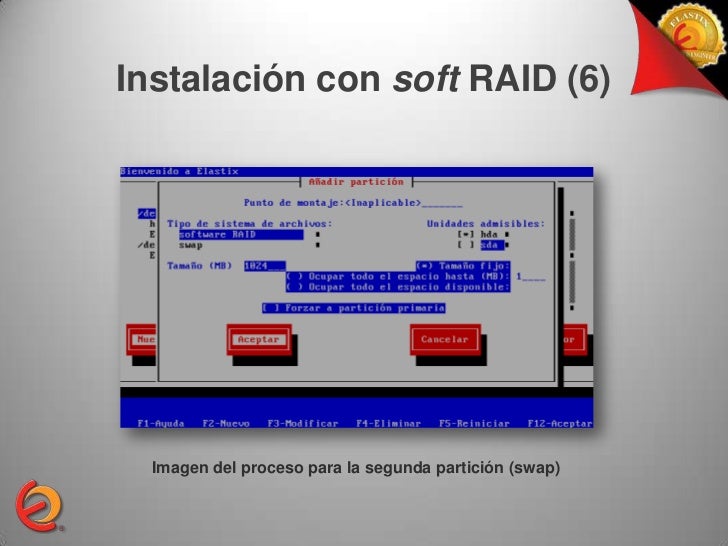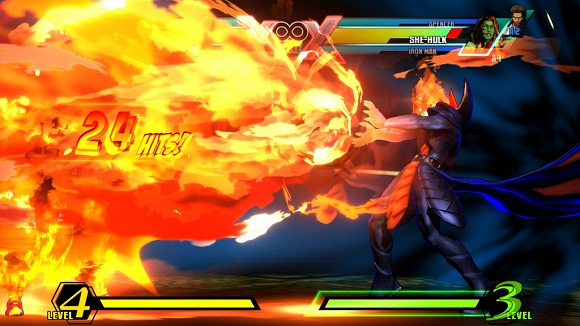Elastix Software Raid
Sep 25, 2014 Elastix RAID Setup Step By Step Including Recovery 16 July. One of the other alternatives is to use Linux Raid or Linux Software Raid.
How to Setup a Software RAID on CentOS 5 This article addresses an approach for setting up of software (mdraid) RAID1 at install time on systems without a true hardware RAID. controller. It is NOT supported by the CentOS project; it is NOT a recommended approach for non-hobby users (see the Design Consideration note, infra). Rather this article is written to document an approach involving much local experimentation, to end up with a fragile result that is not updated when a software update installs a new kernel. We do NOT recommend it. Years of experience demonstrate that is is highly likely that you WILL forget to do a bootloader refresh, and run a greater risk of losing data, than the theoretical risk of a hard drive failure.
Elastix Sip
'Unsupported' means: when you appear and ask about this article in the #centos IRC channel, the knowledgeable channel regulars will tell you it is NOT SUPPORTED and DO NOT DO THAT. Design consideration: Is it sensible to even be using RAID for the /boot partition?
The content at mountpoint: /boot/ is normally placed on a native (non-RAID) partition. It is relatively small in size; under 250 megabytes is customary. As such it is not difficult to gain redundancy of that data with a simple copy, post chnage, to a location under RAID redundancy AFTER an initial installation AND after each update of the kernel. You might do so with a small script such as this: # ! -d /root/bootbackup && mkdir -p /root/bootbackup # rsync -a -v /boot/.

And so to get a RAID protected copy of that partition. RAID is of course not a backup solution. Using this approach avoids the rather kludgy and fragile approach outlined below.
The actions described in this write-up can damage an existing filesystem. Please experiment first on a test box and then only proceed after creating current and proven viable backups. Never blindly copy/paste commands, particularly as root, without a thorough understanding of their effects.
This approach implies hardware controllers that expose the raw block devices directly to the operating system. It is also assumed that the devices involved are /dev/sda and /dev/sdb for the first two SATA or SCSI drives. Replace /dev/sda and /dev/sdb with /dev/hda and /dev/hdb (or possibly /dev/hdc for a secondary master) respectively for the first two parallel ATA drives. Adjust drive designations as required for other configurations. Be very careful to adjust commands for your situation and not simply blindly follow the procedure.
Booting will only work with /boot on non-RAID or RAID1 partitions. RAID0, RAID5 or other RAID types will not work for /boot and RAID0 (striping with no redundancy) is not recommended for critical partitions. With the /boot constraints satisfied, the root and other partitions may be RAID5 or another type; however, these options are not covered in this example. The 'dd' commands and the installation procedure described below will destroy all information on the disks. If you have data on the drives that you need access to, please backup the drives and test the adequacy of the backups, first.
Section One. Disable any fake RAID in the motherboard or RAID controller BIOS so that it acts as a normal controller - usually either ATA or SATA, possibly SCSI. It may be necessary to overwrite the partition tables if fake raid has previously been used on the disks. Do not load a RAID driver. The following commands may be performed on the 2nd virtual console (Ctrl-Alt-F2) during a graphical install before partitioning, or booted in rescue mode from installation media, or from a LiveCD. The partition tables of the devices will be zeroed out and all contents of the drives lost!. dd if=/dev/zero of=/dev/sda bs=512 count=64 dd if=/dev/zero of=/dev/sdb bs=512 count=64.
Begin graphical installation of CentOS. May need to use 'boot: linux nodmraid' or Press Tab at the initial installation selection menu and add nodmraid to the boot commands. Customize partitions and remove all partitions, including LVMs, for a fresh start. Create an 100MB software RAID partition on sda and sdb for /boot.
Vista Software Raid

Windows Vista Software Raid

Create a software RAID partition on sda and sdb for swap. This partition size is based on the amount of RAM and personal preferences. The example uses 1GB.
